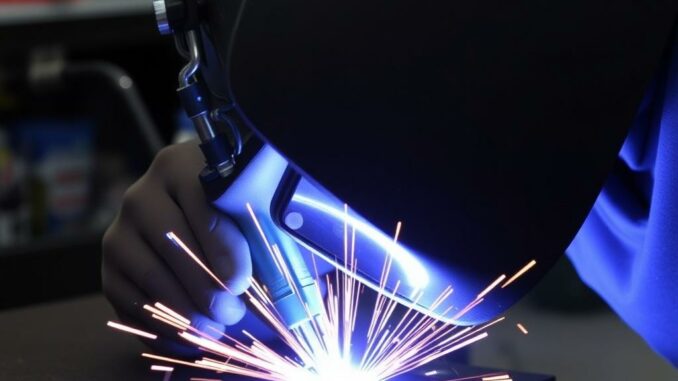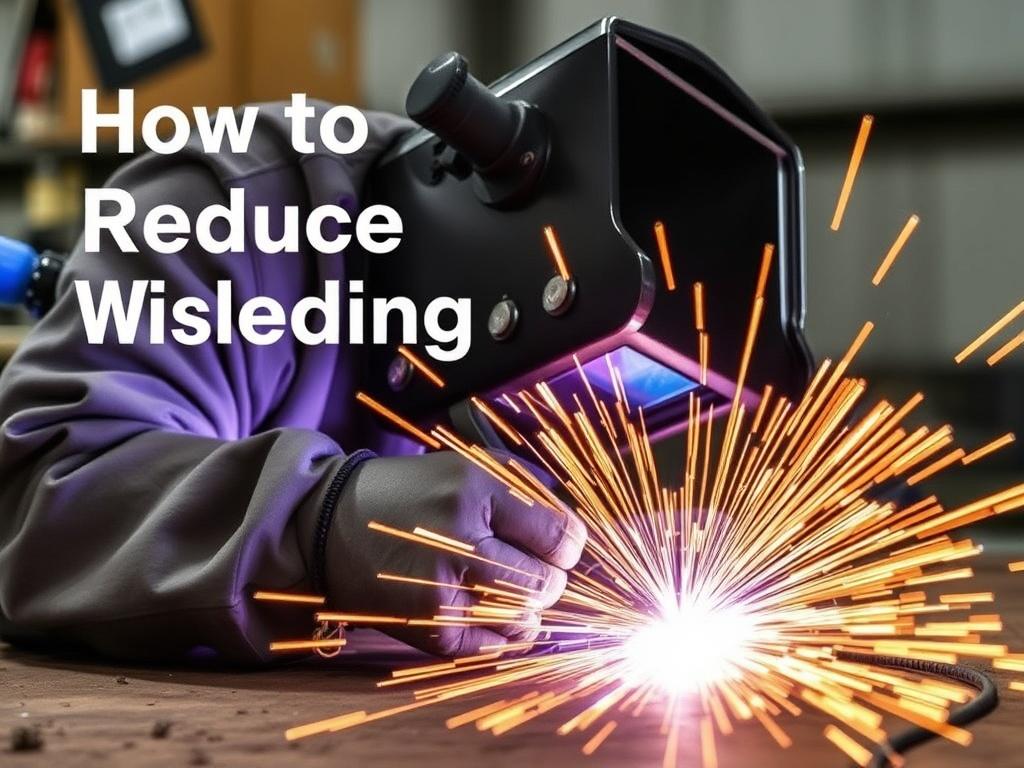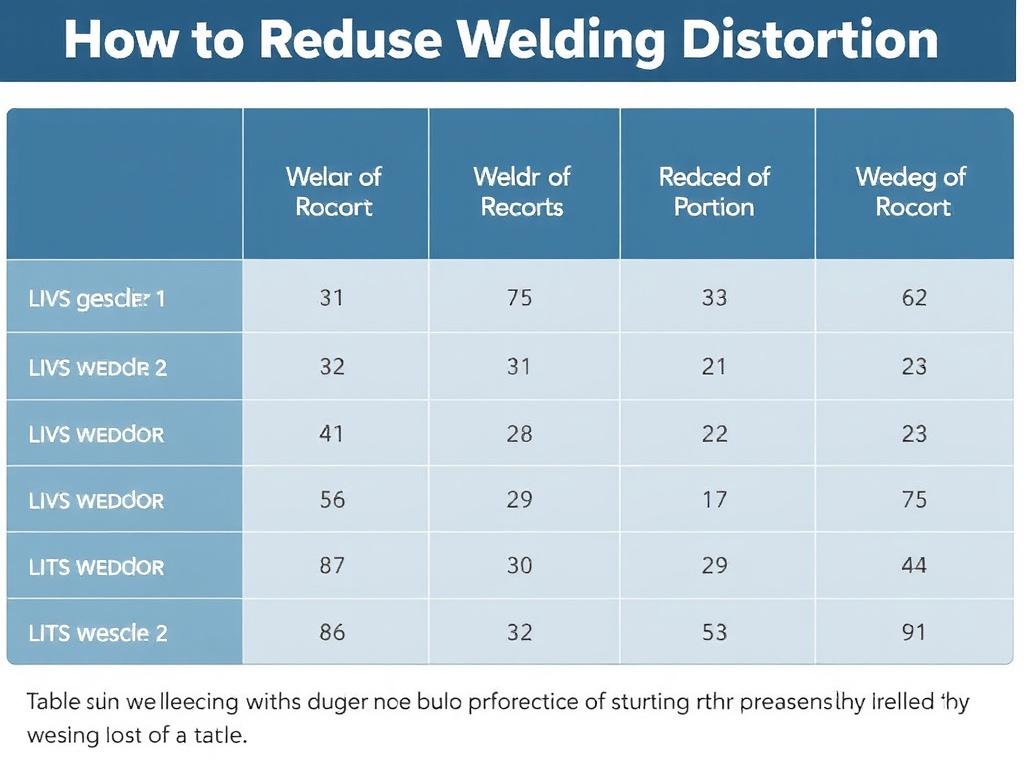
Welding is an essential process in fabricating everything from tiny electronics to massive steel structures. Yet, anyone who’s spent time behind a welding helmet knows that distortion can be the bane of the craft. Welding distortion refers to the unwanted warping, bending, or twisting of metal caused by the intense heat of welding. It can compromise the strength, fit, and overall quality of your welds and finished projects.
Whether you’re a seasoned welder, a hobbyist, or an engineer concerned about production quality, understanding how to reduce welding distortion is crucial. In this detailed article, we’ll explore everything you need to know—from why distortion happens to practical techniques to prevent and control it. Armed with this knowledge, you’ll be able to produce stronger, more precise welds with less rework and frustration.
What Is Welding Distortion and Why Does It Happen?
Before we dive into how to reduce welding distortion, it helps to understand exactly what it is and the main causes behind it. Welding distortion is basically any change in the shape or size of the metal workpiece that results from the heat and subsequent cooling during welding. Because welding involves melting and fusing metals, the temperature changes are drastic and highly localized.
When steel or other metals heat up, they expand; when they cool down, they contract. This expansion and contraction, which occurs unevenly because the heat is focused at the weld zone, create internal stresses in the metal. These stresses cause the metal to bend, twist, cup, or warp.
Common types of welding distortion include:
- Angular distortion: The metal bends at an angle near the weld due to shrinkage on one side.
- Longitudinal distortion: Shrinkage along the length of the weld causes the metal to curve or bow.
- Transverse distortion: Shrinkage across the width of the weld results in contraction forces pulling inward.
- Bowing: The workpiece bends in the middle like a bow due to uneven heating and cooling.
- Buckling: The weld deposit causes the joint to buckle or bulge out.
These distortions can cause multiple problems in your project, such as poor fit-up between components, reduced structural integrity, increased stress concentrations, and extra work to correct or rework the weld.
The Science Behind Welding Distortion: Thermal Expansion and Contraction

To fully appreciate how to reduce welding distortion, a bit of metallurgy and physics can help. At the core of the issue is thermal expansion and contraction that metals experience due to heat. When the welding arc melts the base metal, it creates a high-temperature molten pool. Heat radiates into the nearby metal, causing it to expand.
Since the heat input is localized, only certain areas expand, while other parts of the metal remain cooler and more rigid. This uneven thermal expansion sets up internal stresses. When the weld cools, the metal contracts, but again, unevenly. The weld metal solidifies first and pulls on the hotter, still expanding metal. Then the cooler metal contracts at different rates. These cycles of expansion and contraction introduce tensile and compressive stresses throughout the joint.
When these stresses become too large for the metal to elastically withstand, the workpiece deforms permanently — this is welding distortion. It helps to think of the metal like a spring that’s being stretched and compressed unevenly, causing it to bend, twist, or warp.
Factors Influencing Welding Distortion
Many factors affect the amount and type of distortion you get during welding. Understanding these can help welders anticipate problems and choose strategies to minimize distortion.
Material Type and Thickness
Different metals respond differently to heat. Steel, aluminum, stainless steel—all have unique thermal conductivity, expansion coefficients, and melting points. Aluminum, for example, has a higher coefficient of thermal expansion than steel, which means it expands and contracts more for the same temperature change and is more prone to distortion.
Material thickness also plays a key role. Thinner materials heat more quickly and cool faster, making them harder to control and more likely to warp. Thicker plates absorb heat more evenly but can develop distortion due to residual stresses or uneven temperature gradients across their depth.
Joint Design
The design of the weld joint affects heat flow and restraint, which in turn influence distortion. Butt joints, lap joints, T-joints, and corner joints all behave differently under welding heat.
The amount of weld metal, weld bead size, and the number of passes also matter. Larger weld beads mean more heat input, increasing the likelihood of distortion unless carefully balanced.
Welding Procedure and Heat Input
The welding technique, including travel speed, amperage, voltage, and preheat, affect heat input. Higher heat input generally increases distortion. Conversely, using a faster travel speed or lower heat input reduces the overall thermal effect and shrinkage but may impact weld quality if not done right.
Fixturing and Clamping
How the workpiece is held or restrained during welding is a major factor. Good fixturing can help resist distortion forces and retain alignment, while inadequate clamping lets the metal move and distort more freely.
Effective Techniques to Reduce Welding Distortion
Now that we’ve covered the fundamentals, let’s explore some practical and proven methods to minimize welding distortion. Many of these techniques can be combined for best results, and their applicability depends on your specific project.
1. Proper Joint Design and Fit-Up
Starting with a well-prepared joint is the first step to reducing distortion. Ensure the parts are clean, aligned, and properly fit-up. Using tight tolerances limits gaps which can reduce the volume of molten weld metal and the heat input needed to fill them.
Optimizing joint design may include:
- The use of backing bars or strips to limit weld penetration and heat input
- Choosing the right bevel angles to reduce excess filler metal
- Using chamfers and preparation that minimize welding passes
2. Controlling Heat Input
One of the most effective ways to reduce distortion is to manage the welding heat input. Lower heat input lessens the amount of metal melted and reduces the zone affected by thermal expansion and contraction.
Some strategies include:
- Increase travel speed: Welding too slowly means more heat hits one spot. Faster travel spreads the heat more evenly.
- Reduce amperage and voltage: Use settings appropriate for the material thickness and joint to avoid excess heat.
- Use multi-pass welding cautiously: Multiple passes add heat cumulatively. Balance passes with controlled cooling between passes.
- Employ pulse welding: Pulsed arc welding techniques cycle the current and reduce overall heat input.
3. Preheating and Post-Weld Heat Treatment
Preheating the workpiece before welding slows down cooling rates, which helps relieve thermal gradients and reduces residual stress. It’s particularly useful for thick materials or metals prone to cracking.
Post-weld heat treatment including stress relieving can warm the entire workpiece uniformly, helping reduce internal stresses and distortion after welding.
4. Proper Fixturing and Clamping
Restraint during welding is critical to controlling distortion. Strong fixtures maintain alignment and resist the forces caused by shrinking weld metal.
Fixtures can be designed to apply force opposite to the expected distortion direction, compensating for shrinkage.
However, avoid over-clamping, which can cause other issues such as stress concentration or deformation from fixture pressure.
5. Balanced Welding or Backstepping
Balanced welding methods involve alternating weld passes to distribute heat more evenly. For example, backstepping involves welding in short segments opposite the direction of progression and then moving forward, which balances shrinkage forces and reduces distortion.
6. Use of Heat Sinks and Chill Bars
Attaching heat sinks or chill bars near the weld area helps absorb and disperse heat away from the weld zone, reducing the heat concentration and thus thermal expansion.
7. Sequence and Technique of Welding
Planning the sequence in which welds are made can greatly influence distortion. Welding symmetrically, welding from the center outward, or balancing weld passes can minimize warping.
Additionally, using proper welding techniques such as weaving or stringer beads helps control the weld bead shape and heat affected zone.
Practical Tips and Tricks from Experienced Welders
In addition to the systematic approaches mentioned above, here are some everyday tips that can help you control welding distortion:
| Tip | Explanation |
|---|---|
| Use smaller weld beads | Smaller beads mean less heat and shrinkage. |
| Intermittent Welding | Use weld skips or stitch welding instead of continuous welds to reduce total heat input. |
| Allow Cooling Time | Pause between passes to let the metal cool and reduce cumulative heat buildup. |
| Use Backgouging | Remove weld excess to minimize distortion and weld rework. |
| Align Parts Before Welding | Use tack welds strategically to hold joints in place during full welding. |
| Avoid Welding at Edges | Edges distort more due to lack of restraint—plan weld locations accordingly. |
Case Studies: Real-World Examples of Welding Distortion Control

To make the concepts concrete, let’s look at some examples where welding distortion was successfully reduced by applying the principles we discussed.
Case Study 1: Automotive Frame Assembly
In automotive frame manufacturing, dimensional accuracy is crucial for safety and assembly. One manufacturer was battling severe distortion in thin steel components welded with high heat input MIG welding.
By switching to pulsed MIG welding, reducing the amperage, and increasing travel speed, the distortion drastically reduced. Additionally, they introduced backstepping welding sequences and strong fixturing, preventing angular distortion. This led to lower scrap rates and cost savings.
Case Study 2: Large Steel Structure Fabrication
A steel bridge fabrication company was challenged with controlling distortion in thick steel plates welded by stick welding (SMAW). The thick plates had strong thermal gradients causing severe bowing and buckling.
They introduced preheating at 150°C and post-weld heat treatment. They optimized weld sequences by welding outward symmetrically from the centerline. Heavy-duty fixtures were used to clamp the plates. These combined efforts lowered rework and improved structural integrity.
Table of Common Welding Processes and Their Tendency for Distortion

| Welding Process | Heat Input Level | Tendency for Distortion | Typical Applications |
|---|---|---|---|
| SMAW (Stick Welding) | Medium-High | Moderate to High | Structural steel, repair work |
| MIG (GMAW) | Medium | Moderate | Automotive, production welding |
| TIG (GTAW) | Low | Low | Thin materials, pipeline, aerospace |
| Plasma Arc Welding | Medium | Moderate | Precision welding, thin metals |
| Submerged Arc Welding (SAW) | High | High | Heavy fabrication, thick materials |
Summary: Best Practices to Minimize Welding Distortion
Reducing welding distortion is about anticipating where and how the metal will move and counteracting those forces through smart welding practice. The key takeaways include:
- Design smart joints with minimal weld volume and good fit-up.
- Control heat input with proper welding settings and faster travel speeds.
- Use preheat and post-weld heat treatment for thick or sensitive materials.
- Secure the workpiece with clamps and fixtures to resist movement.
- Plan the weld sequence and apply balanced or backstep techniques.
- Utilize heat sinks where possible to disperse heat.
- Allow for cooling times between passes or intermittent welds.
- Pay attention to material type and thickness and adjust parameters accordingly.
By applying these principles consistently, you’ll significantly reduce welding distortion, saving time, materials, and improving the quality of your welds. Welding is as much an art as a science, and mastering how to reduce distortion will elevate your craftsmanship to the next level.
Further Resources and Tools
For those interested in delving deeper or needing to predict distortion for complex weldments, consider exploring advanced welding simulation software, metallurgy texts, and industry standards such as AWS (American Welding Society) guidelines.
- American Welding Society
- TWI Knowledge Hub on Welding Distortion
- Boellhoff: How to Avoid Welding Distortion
Remember, reducing welding distortion requires practice, thoughtful planning, and constant learning. Keep experimenting, keep adjusting your techniques, and soon welding distortion will become a manageable aspect, not a frustrating obstacle.
Happy welding!
